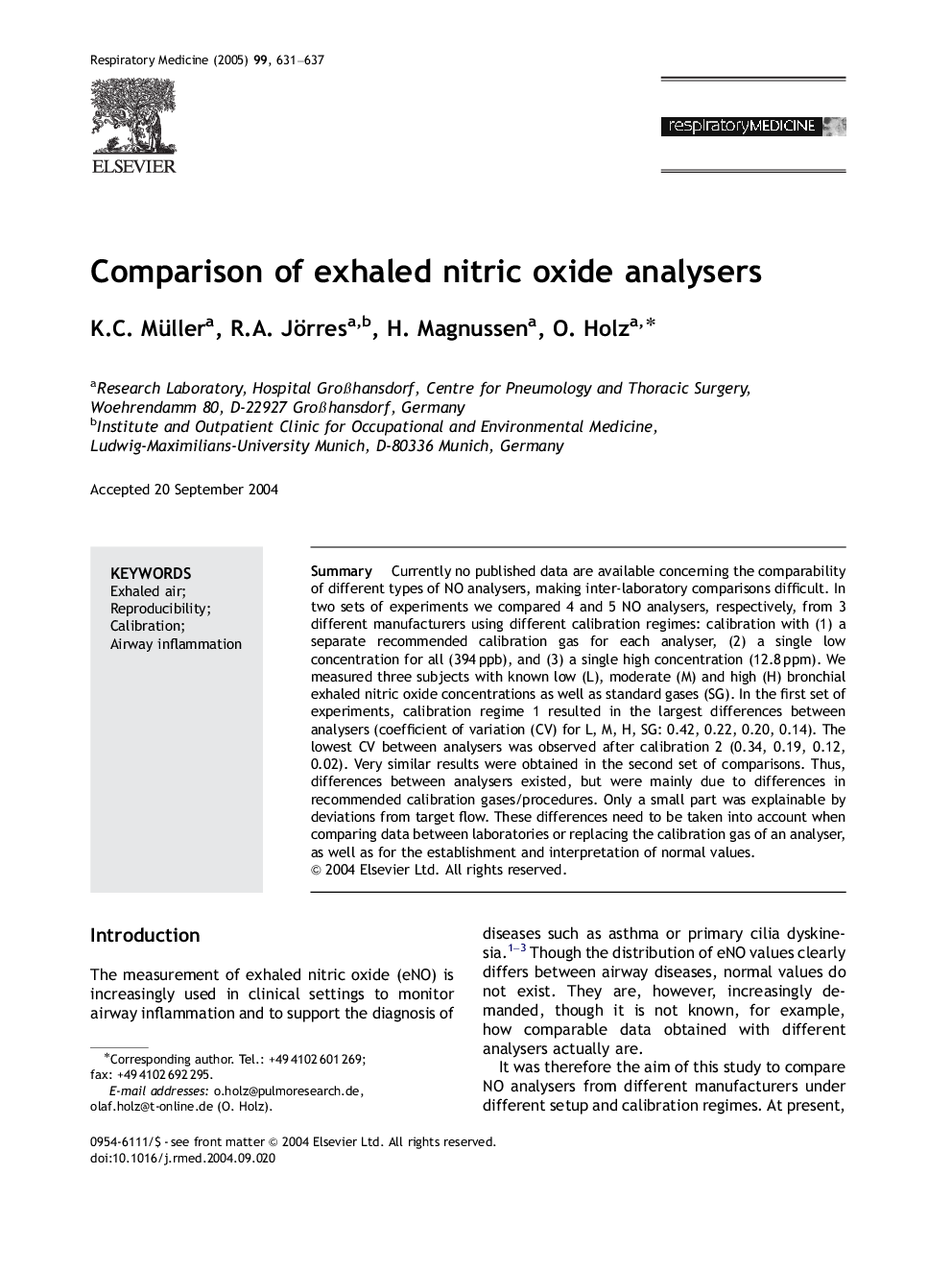| Article ID | Journal | Published Year | Pages | File Type |
|---|---|---|---|---|
| 9385909 | Respiratory Medicine | 2005 | 7 Pages |
Abstract
Currently no published data are available concerning the comparability of different types of NO analysers, making inter-laboratory comparisons difficult. In two sets of experiments we compared 4 and 5 NO analysers, respectively, from 3 different manufacturers using different calibration regimes: calibration with (1) a separate recommended calibration gas for each analyser, (2) a single low concentration for all (394Â ppb), and (3) a single high concentration (12.8Â ppm). We measured three subjects with known low (L), moderate (M) and high (H) bronchial exhaled nitric oxide concentrations as well as standard gases (SG). In the first set of experiments, calibration regime 1 resulted in the largest differences between analysers (coefficient of variation (CV) for L, M, H, SG: 0.42, 0.22, 0.20, 0.14). The lowest CV between analysers was observed after calibration 2 (0.34, 0.19, 0.12, 0.02). Very similar results were obtained in the second set of comparisons. Thus, differences between analysers existed, but were mainly due to differences in recommended calibration gases/procedures. Only a small part was explainable by deviations from target flow. These differences need to be taken into account when comparing data between laboratories or replacing the calibration gas of an analyser, as well as for the establishment and interpretation of normal values.
Related Topics
Health Sciences
Medicine and Dentistry
Pulmonary and Respiratory Medicine
Authors
K.C. Müller, R.A. Jörres, H. Magnussen, O. Holz,
